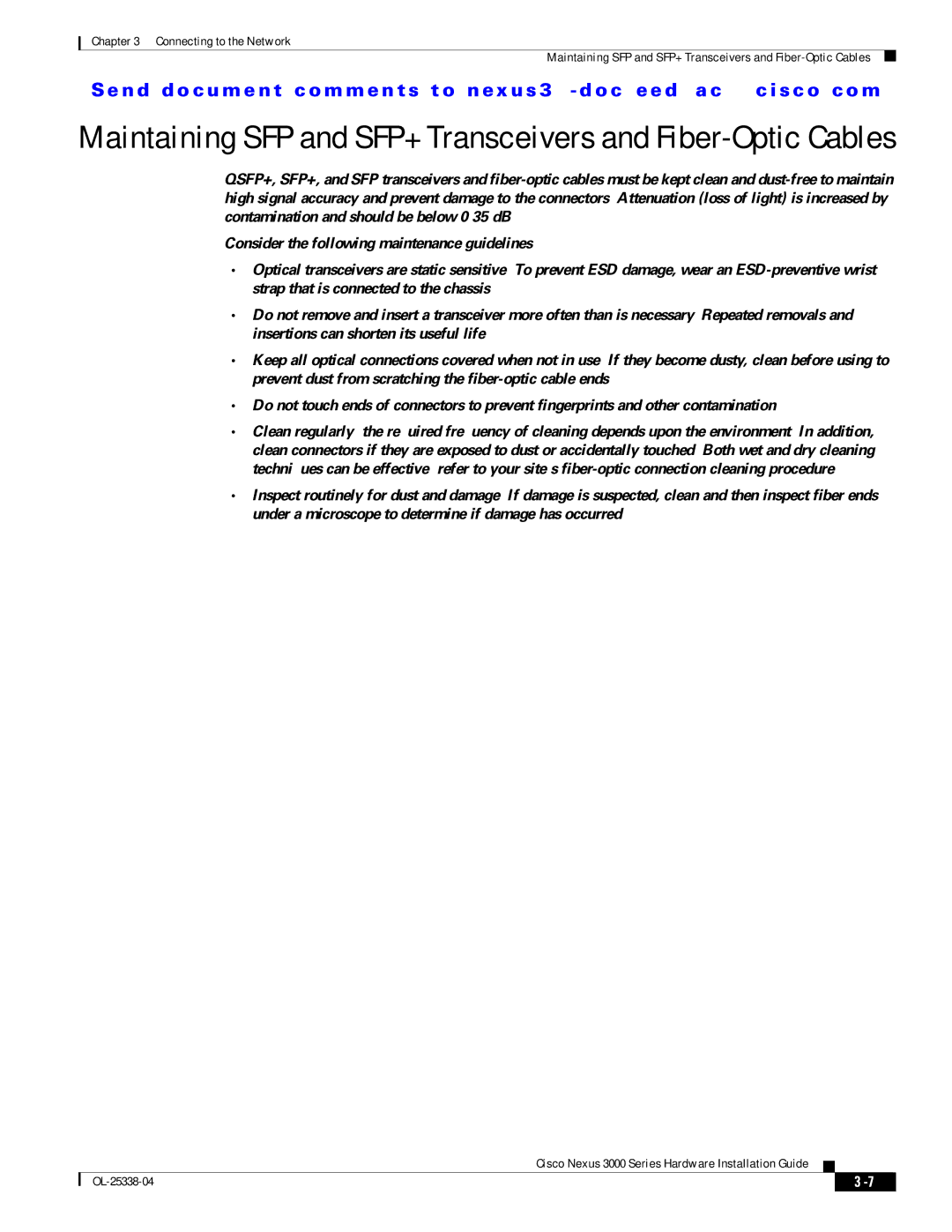
Chapter 3 Connecting to the Network
Maintaining SFP and SFP+ Transceivers and
Se n d d o c u m e n t c o m m e n t s t o n ex u s 3 k - d o c f e e d b a ck @ c i sc o . c o m
Maintaining SFP and SFP+ Transceivers and Fiber-Optic Cables
QSFP+, SFP+, and SFP transceivers and
Consider the following maintenance guidelines:
•Optical transceivers are static sensitive. To prevent ESD damage, wear an
•Do not remove and insert a transceiver more often than is necessary. Repeated removals and insertions can shorten its useful life.
•Keep all optical connections covered when not in use. If they become dusty, clean before using to prevent dust from scratching the
•Do not touch ends of connectors to prevent fingerprints and other contamination.
•Clean regularly; the required frequency of cleaning depends upon the environment. In addition, clean connectors if they are exposed to dust or accidentally touched. Both wet and dry cleaning techniques can be effective; refer to your site’s
•Inspect routinely for dust and damage. If damage is suspected, clean and then inspect fiber ends under a microscope to determine if damage has occurred.
Cisco Nexus 3000 Series Hardware Installation Guide
|
|
| |
|
|
